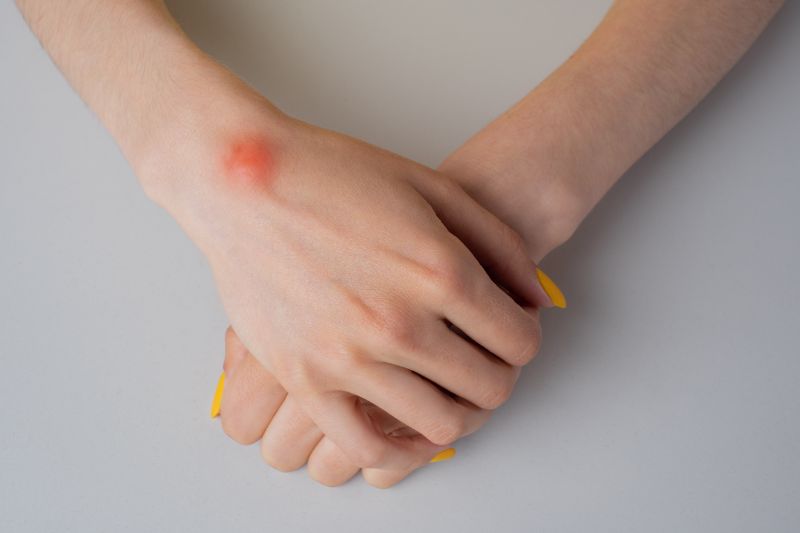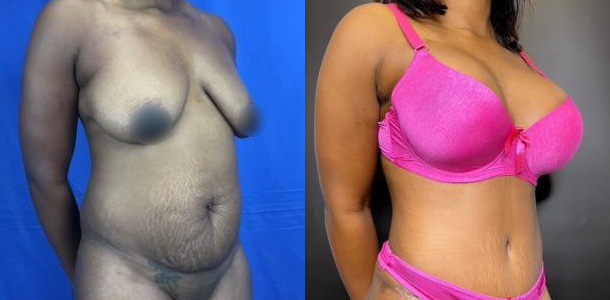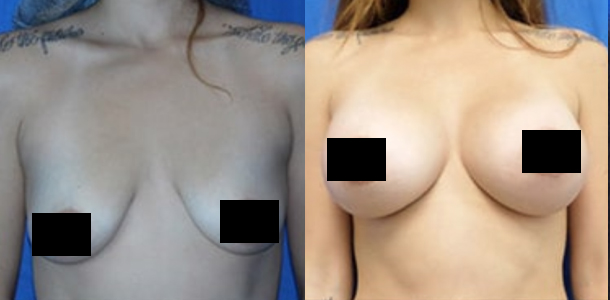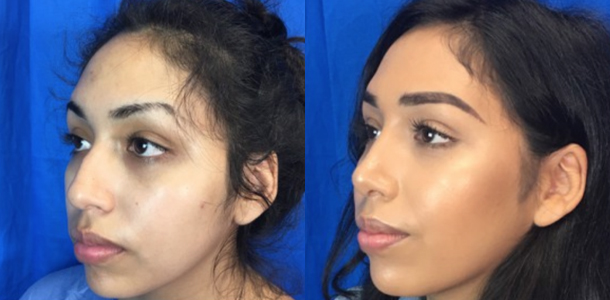Epidermal Inclusion Cysts
Consultations offered at our four convenient locations in Pomona, Beverly Hills, Rancho Cucamonga and Apple Valley, CA

An epidermal inclusion is a dome-shaped mass of tissue that can bulge or protrude from the skin. These cysts are actually an accumulation of tissue just under the skin’s surface, and can occur in any region of the body. These benign growths are also referred to as epidermoid cysts, infundibular cysts, keratin cysts, or so-called “sebaceous” cysts.(1)
A variety of factors cause cysts to appear and they are usually painless. However, if they are unsightly, causing mobility problems, have become inflamed or infected, patients should seek medical advice.
As experts in both medical and cosmetic dermatology, the physicians at Phoenix Skin Medical, Surgical & Cosmetic Dermatology provide tailored services for your skin problems. You can find relief for your skin woes and get effective treatment for cysts, lipomas, warts, moles, and other skin lesions. Call us now at 602-222-9111 (Phoenix) or 480-473-9111 (Scottsdale), or use our online form to get in touch with us.
Contents
What is an Epidermal Inclusion Cyst?
Epidermal Inclusion Cysts are caused by a blockage in a hair follicle. This blockage occurs when skin cells make their way into the follicle’s opening, the infundibulum, or what we commonly call our pores. Our normal process of skin regeneration gets thrown off track, and a cyst forms. Epidermal inclusion cysts can occur nearly anywhere on the body.
Common Locations for Epidermal Inclusion Cysts
- Face
- Neck
- Chest
- Back
- Scrotum
- Genitals (2)
People in their 30s and 40s are the most likely to get epidermal inclusions, and men are twice as likely as women to experience these cysts. (3) They can be annoying, and often a little embarrassing, especially if they are in a noticeable place on the body.
Cysts, Inside and Out
Pilosebaceous units are what lie directly under each visible pore or hair on our skin. This includes the tube-like follicle that produces hair, and the sebaceous gland that produces sebum to keep our skin and hair lubricated and healthy. (4) Excess sebum, bacteria, and inflammation cause the raised surface of a pimple and epidermal inclusion cysts are large build-ups keratin (skin cells) within the pore. (5)
Keratin
Our body renews skin in a continuing cycle, from the inside out. As skin cells make their way from the deeper layers of our dermis, they undergo changes. The top layer of skin cells is called the epidermis. Skin cells of this layer form a tough protective barrier and eventually dye, shedding from our bodies during this ongoing cycle. Occasionally, these cells get detoured and end up in the follicle. They continue to produce keratin, plugging the follicle and leading to the internal growth of the cyst. Epidermal inclusion cysts are recognizable by a punctum: the visible dark plug of keratin in the middle of the lump. As keratin continues to be produced, the walls of the follicle become stretched to accommodate the growing accumulation of keratin, and the bump underneath the skin becomes larger.
What are the Signs of a Ruptured Cyst?
Other than their undesirable appearance, epidermal inclusion cysts do not usually cause any problems. However, complications can arise if they rupture. When this occurs, many of the cyst’s attributes can change, and there is a greater risk of infection. Your cyst may have ruptured if you experience any of the following symptoms:
Presence of a foul-smelling yellowish discharge
Reddening of the skin (erythema)
Swelling and tenderness in the area
Tissue hardening (calcification)
Sudden size fluctuation of the mass (2)
Benefits of Epidermal Cyst Treatment
Much of the time, benign cysts do not cause too much trouble. If the cyst is small and in an inconspicuous place, it may not be a cause for concern. However, if it bothers you, it should be removed! If your cyst has grown in size, or if it is causing you pain, you may want to seek medical treatment. Similarly, if you have concerns that your cyst may be malignant, you should always get it checked out. The benefits of cyst removal are usually dependent on individual circumstances, but four of the main advantages of cyst removal are:
- Cosmetic considerations
- Solves recurring infection
- Relief from pain/discomfort
- Stopping growth/tissue disruption in the area
Candidates for Cyst Removal
If your cyst is a concern, and you would like to take steps to having it removed, speak to the experts at Phoenix Skin. Most men and women in good general health are candidates. If you would like to find out more, and begin the process, call our Phoenix office at 602-222-9111 or our Scottsdale office at 480-473-9111 for a professional consultation with our skin experts.
Personal Consultation
At your consultation, you will have the opportunity to speak to one of our team members privately about your cyst, and any problems it has caused you. You will undergo an examination and the physician will discuss the best form of treatment according to the location, size, and aggravation it is causing. Please feel free to speak openly if you have any questions or concerns about the procedure.
Cyst Treatment Methods
There are three main routes of treatment for epidermal inclusion cysts:
Injection
A smaller cyst may not need to be removed entirely. Depending on its features, your doctor may choose to inject the site with a medicine known as triamcinolone. This substance reduces inflammation, prevents infection, and may reduce the need for future surgical measures. (1)
Incision & Drainage
Drainage of larger cysts may be necessary. Doctors usually perform these procedures using a local anesthetic, such as lidocaine with epinephrine, for patient comfort. They then make a small incision on the overlying skin of the cyst. The cyst is then allowed to drain. If necessary, a small catheter is inserted and left for some time to keep the incision open and to intermittently drain the contents of the cyst.
Excision Surgery
Complete excision of a cyst is usually the most successful form of treatment. In the hands of a dermatologic surgeon, a small incision can remove the mass entirely, and limit recurrence. It is a minor, in-office procedure. After injecting the surrounding area with anesthesia, your doctor will make a small elliptical incision on the top of the cyst. By carefully exerting manual pressure on either side, the contents can be expressed and removed permanently. After this, the sac walls may become partially dislodged. With careful removal through the small incision, the surrounding tissues are cosmetically preserved, and the sac can be taken out entirely.
Aftercare for Cyst Treatment
After your cyst has been removed, you must treat it with care, as you would any other wound. Care for the area as directed by the doctors at Phoenix Skin Medical.
- Keep the bandaged area clean and dry for the first 24 hours.
- Follow the aftercare instructions given to you at your appointment
- Use ice packs to reduce swelling and discomfort.
- Schedule a follow-up appointment to ensure you are healing as expected.
Important Note: Please contact us immediately if you have the following symptoms, as they may indicate an infection:
- A considerably saturated bandage after your first dressing change
- Your swelling is abnormally painful
- There is any spreading of redness over half an inch or more around the incision
- If you have a fever over 101.5° F
Cost of Cyst Treatment in Scottsdale, AZ
Cysts come in many forms and may present in various ways throughout the body. As a result, the cost of your cyst treatment will vary according to the type of procedure you receive. You can discuss this and all other aspects of your treatment plan at your personal consultation.
For more information about skin conditions, and the treatments available at Phoenix Skin Medical, please read our blog, or stay up-to-date with our skincare community on YouTube, Facebook, and Twitter!
FAQ
When should I get a cyst removed?
You should consider cyst removal if it is causing you pain, it has ruptured, if it has become infected, or if it is a cause for concern. Your doctor will evaluate it and test its contents for a better understanding of its makeup. From here, they may use injection treatment, drainage, or total removal. Some people choose to remove benign cysts for cosmetic reasons.
If I get a cyst removed, will it come back?
Some cysts will recur depending on their type and location. To avoid this, the standard procedure is to excise (remove) the cyst in its entirety, including the sac that surrounds the fluid.
What’s the difference between a cyst and a lipoma?
Although they can appear similar on the surface, the main difference between a cyst and a lipoma is its contents. Usually, cysts such as epidermal inclusions contain keratin, the same substance responsible for the formation of your hair, skin, and nails. On the other hand, lipomas usually contain adipose (fatty) tissue. Like cysts, some lipomas, such as angiolipomas, can cause discomfort.
References
- Weir, C. B., & St. Hilaire, N. J. (2020). Epidermal Inclusion Cyst. PubMed; StatPearls Publishing. https://www.ncbi.nlm.nih.gov/books/NBK532310/
- Hoang, V. T., Trinh, C. T., Nguyen, C. H., Chansomphou, V., Chansomphou, V., & Tran, T. T. T. (2019). Overview of epidermoid cyst. European Journal of Radiology Open, 6, 291–301. https://doi.org/10.1016/j.ejro.2019.08.003
- Zito, P. M., & Scharf, R. (2020). Cyst, Epidermoid (Sebaceous Cyst). PubMed; StatPearls Publishing. https://www.ncbi.nlm.nih.gov/books/NBK499974/
- Sutedja, E. K., Tsaqilah, L., Sutedja, E., Diana, I. A., & Gunawan, H. (2020). An Unusual and Rare Case of Generalized Multiple Epidermoid Cysts with a Giant Epidermoid Cyst. International Medical Case Reports Journal, Volume 13, 557–562. https://doi.org/10.2147/imcrj.s276911
- Smith, D., & Gaillard, F. (2011). Epidermal inclusion cyst. Radiopaedia.org. https://doi.org/10.53347/rid-13731



